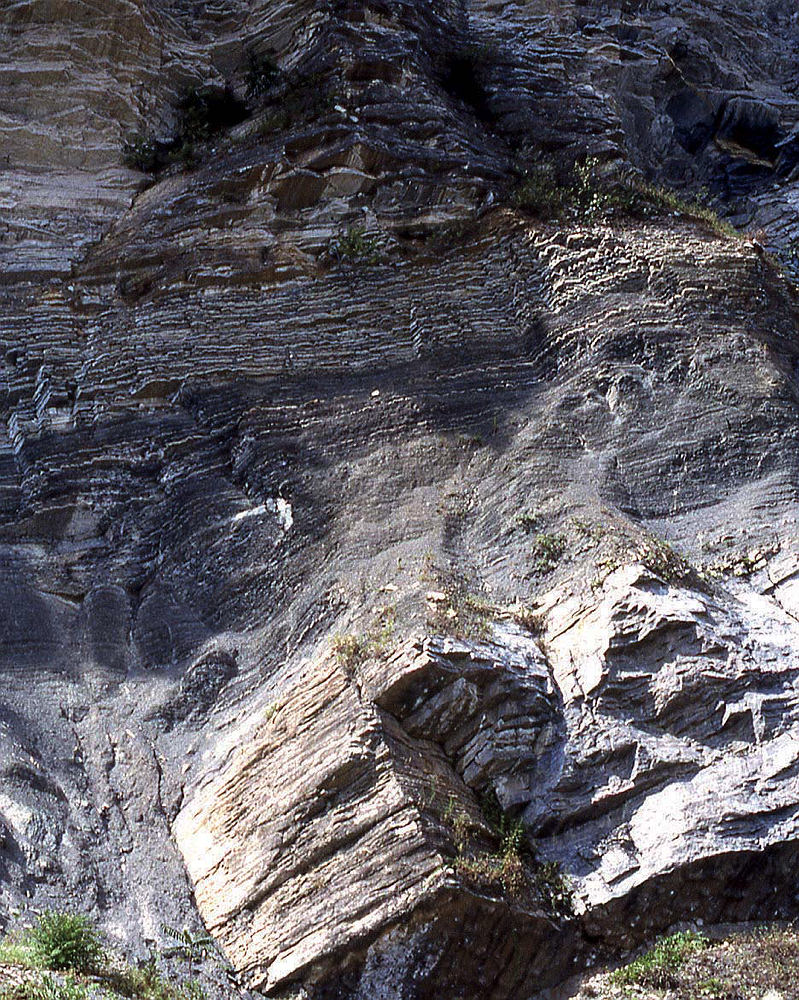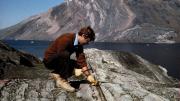Earth, with its mountains and rivers, forests and grasslands, oceans and marshes, is home to an extraordinary range of life. It is also the source of the food—and air—that sustain humanity, and of the natural resources—coal and oil, gold and diamonds—that have supported civilization, with all its cultural and social glories and shortcomings.
But the planet has not always been so hospitable to life, as Fisher professor of natural history Andrew H. Knoll describes in A Brief History of Earth. Four billion years ago, after the first microorganisms established a foothold on this planet—and perhaps nowhere else—long periods of slow environmental transformation ensued. The oxygenation of Earth, which began with “enough oxygen to support an amoeba but not enough to sustain a beetle,” he writes, was one of these gradual shifts. But Earth’s history of measured transformations has also been punctuated by cataclysmic changes. The best-known catastrophe—the meteorite that killed the dinosaurs and left a 125-mile-wide crater in the Yucatan peninsula—was not typical. Much more instructive, explains Knoll, are four other major extinction events of the past 500 million years, a period documented by the fossil record. Each of these life-ending calamities was home-grown, caused by shifts in the planet’s geochemistry that are the result of interactions between the biosphere and the physical world of rock, wind, and water.
As Knoll, an acclaimed geologist, writes, cliffsides are “nature’s library, with volumes of earth history on display, inscribed in stone. Collectively, these rocks offer a grand narrative of Earth’s development from youth to maturity, of life’s evolution from bacteria to you and—perhaps the grandest narrative of all—of the ways that the physical and biological Earth have influenced each other through time.”
One episode in particular from a history “far grander and more spectacular than any Hollywood blockbuster” hits with the shock of recognition: the end-Permian, almost 252 million years ago, when atmospheric carbon dioxide (CO2) was rising swiftly. The ensuing environmental consequences (including the deadly trio of ocean warming, acidification, and deoxygenation) wiped the marine fossil record nearly clean. The rich diversity of animals, seaweeds, and protozoans that lived along the late Permian coast is preserved in limestone at the base of a mountainside at Meishan, China, that Knoll has made famous in a lifetime of research and exploration. “Halfway up the section, these fossils simply disappear. All of them. At a point the thickness of a knife blade.”

The Permian-Triassic boundary at Meishan, China. Some 90 percent of marine animal species went extinct at the point marked by the change in sedimentary rock type.
Photograph courtesy of Andrew Knoll
Knoll’s aim in writing his new book is to put Earth’s present into context. “These days the headlines often seem to have been ripped from the Book of Revelation,” he notes of the increasingly frequent reports of wildfires, droughts, floods, hurricanes, melting glaciers, and burning rainforests. “The news from biology is hardly better,” he continues: “a 30 percent decline in North American bird populations since 1970; insect populations halved; massive coral mortality” along the 1,400-mile-long Great Barrier Reef, which has protected Australia’s coast for millions of years; “rapid declines of elephants and rhinos; and commercial fisheries under threat around the world. Population decline is not extinction but it is the road down which species travel on their way to biological endgame.”
Knoll is the ideal person to tell this story succinctly, having previously condensed Earth’s history into a three-by-five-foot poster for high-school students (see “Geology Intersects Biology,” September-October 2013, page 16). Curator of the paleobotanical collections in the Harvard University Herbaria and professor of earth and planetary sciences, he writes with humor and startling simplicity. He has been at this a long time, having co-taught Harvard’s famous Core course on the history of life and the earth with the late Stephen Jay Gould. His brief history, he writes, is “an exhortation to recognize how profoundly human activities are altering a world 4 billion years in the making. And a challenge to do something about it.”
Although CO2 causes warming, the gas has not always played the villain. Models of stellar evolution suggest that four billion years ago, the sun’s luminosity was only about 70 percent of its present value. “If the sun was dim, why wasn’t the early earth an ice ball? The answer,” writes Knoll, “is greenhouse gases, the bane of twenty-first-century global warming but the long-term guarantor of habitable climate. In the atmosphere, carbon dioxide, in particular, must have been present at more than 100 times its current concentration, keeping the young Earth warm enough to maintain liquid water at its surface.”
Then, Earth was a watery place, with little land and no oxygen, supporting forms of life that bear little resemblance to those that dominate the planet today. Knoll tells how mountains rose up and out of the seas. Chemical weathering of those exposed rocks slowly pulled CO2 out of the oceans and the atmosphere. Later, weathering also provided nutrients that enabled ocean-dwelling photosynthetic cyanobacteria to flourish—and eventually to oxygenate the planet. Photosynthesis by these bacteria, and then by plants, added another mechanism for removing CO2 from the carbon cycle, as organic matter was deposited in sediments (now the source of fossil fuels, their carbon released by burning).
Carbon dioxide has been an essential ingredient in the shifting phases and cycles of the planet’s history, Knoll makes clear. Between 715 million and 635 million years ago, falling levels of CO2 twice turned Earth into a snowball. When releases from volcanoes reversed that pattern over long periods of time, the ice melted. And it was volcanism on a grand scale, an upwelling of volcanic rock across an area the size of Australia, that released the CO2 that brought an end to the Permian—the period most analogous to the present. The source of the CO2 then was different (humans are the authors of Earth’s history now), but the geochemical effects are the same. Add the forces of habitat destruction and the chemical pollution of land, water, and air, warns Knoll, and those forces will weaken the resilience of life on land and in the seas alike.
Taking a geologist’s long-term perspective offers cold comfort: “Eventually the warmer earth will increase rates of chemical weathering, rebalancing atmospheric carbon dioxide as it did in the aftermath of end-Permian extinction, but as in the past, that will take thousands of years,” Knoll warns. “From the perspective of our own lives and those of our children and grandchildren, carbon dioxide is on a one-way trip upward.”
As glaciers melt and warming ocean waters expand, sea levels will rise much higher than the six to eight inches they climbed in the twentieth century. At the same time, he explains, “the physical properties of seawater will change.” As water warms, it carries less life-sustaining oxygen gas, so the oceans “will lose oxygen, especially at depth.” And they will absorb more CO2, acidifying the seas. “That’s right, the trio of killers set in motion by end-Permian volcanism”—each capable of harming the biota individually, and each synergistically enhancing the harm caused by the others when they occur together in Earth’s system—“will return in force during the twenty-first century. It’s already begun.”
To say Knoll is surprised by humanity’s lack of collective action to counter anthropogenic carbon emissions 100 times greater than all existing volcanoes combined is an understatement. He hopes for the discovery of methods to rapidly pull carbon out of the system, and so concludes with an entreaty: “So here you stand, in the physical and biological legacy of 4 billion years. You walk where trilobites once skittered across an ancient seafloor, where dinosaurs lumbered across Gingko-clad hillsides, where mammoths once commanded a frigid plain. Once it was their world, and now it is yours. The difference between you and the dinosaurs, of course, is that you can comprehend the past and envision the future. The world you inherited is not just yours, it is your responsibility. What happens next is up to you.”









